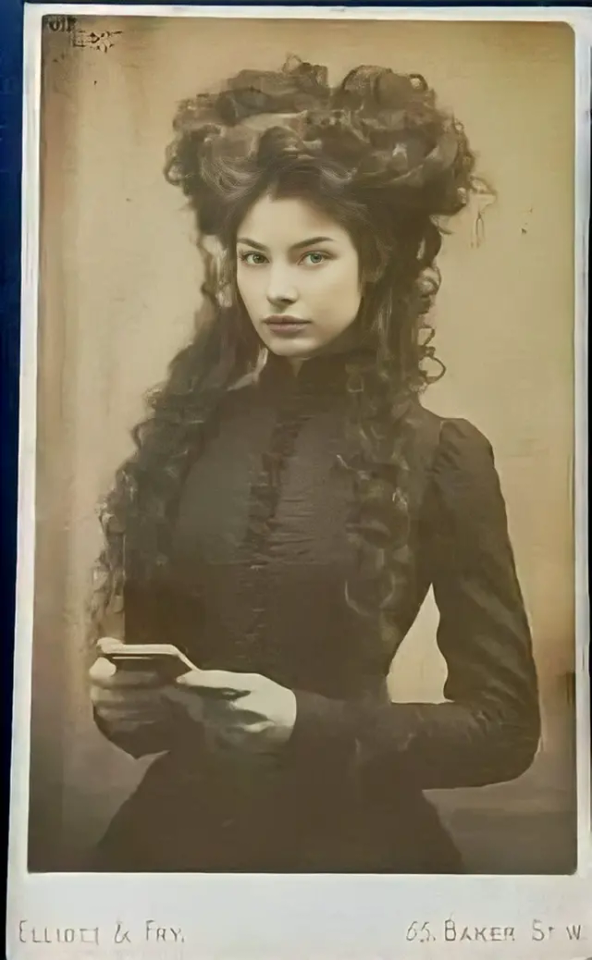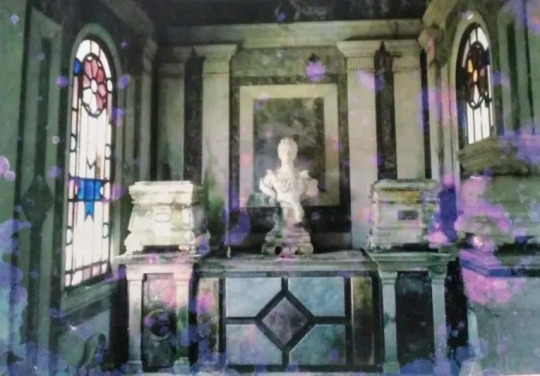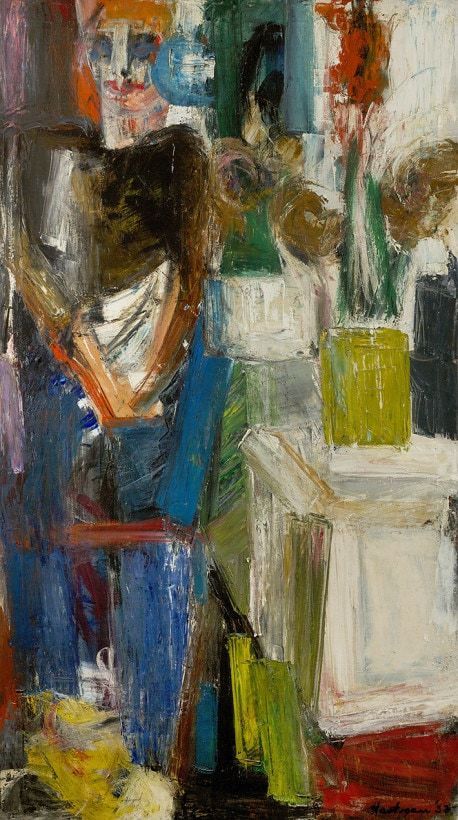#Camille Monfort
Text

Camille Monfort
la légende du 'Vampire de l'Amazonie' (1896)
30 notes
·
View notes
Text

Camille Monfort, LA LEYENDA de "La vampira amazona" (1896).
En 1896, Belém se enriqueció vendiendo caucho amazónico al mundo, enriqueciendo de la noche a la mañana a los campesinos, quienes construían sus ricas mansiones con materiales de Europa, mientras sus esposas e hijas enviaban su ropa al viejo continente para ser lavada, e importaban agua mineral de Londres. para sus baños.
El "Theatro da Paz" fue el centro de la vida cultural en la Amazonía, con conciertos de artistas europeos. Entre ellos, llamó especialmente la atención del público uno, la bella cantante de ópera francesa Camille Monfort (1869 – 1896), quien provocaba indecibles deseos en los ricos señores de la región, y atroces celos en sus esposas por su gran belleza.
Camille Monfort también causó indignación por su comportamiento libre de las convenciones sociales de su época. Cuenta la leyenda que se la vio semidesnuda, bailando por las calles de Belém, mientras se refrescaba en la lluvia de la tarde, y también despertaron la curiosidad sus solitarios paseos nocturnos, cuando la vieron con sus largos vestidos negros y vaporosos, bajo la luna llena, a orillas del río Guajará, hacia el Igarapé das Almas.
Pronto, a su alrededor, se crearon rumores y se dieron vida a comentarios maliciosos. Se decía que era la amante de Francisco Bolonha (1872 – 1938), que la había traído de Europa, y que él la bañaba con caros champagnes importados de Europa, en la bañera de su mansión.
También se decía que había sido atacada por el vampirismo en Londres, debido a su palidez y aspecto enfermizo, y que había traído este gran mal a la Amazonía, teniendo unas misteriosas ansias de beber sangre humana, al punto de hipnotizar a las jóvenes. con su voz en sus conciertos, haciendo que se durmieran en su camerino, para que la misteriosa dama pudiera llegar a sus cuellos. Lo cual, curiosamente, coincidió con relatos de desmayos en el teatro durante sus conciertos, que se explicaban simplemente como efecto de la fuerte emoción que su música producía en los oídos del público.
También se decía que tenía el poder de comunicarse con los muertos, y de materializar sus espíritus en densas nieblas etéreas de materiales ectoplasmáticos expulsados de su propio cuerpo, en sesiones mediúmnicas. Sin duda, fueron las primeras manifestaciones en la Amazonía de lo que luego se llamaría espiritismo, practicado en cultos misteriosos en palacios de Belém, como el Palacete Pinho.
A fines de 1896, un terrible brote de cólera asoló la ciudad de Belém, convirtiendo a Camille Monfort en una de sus víctimas, quien fue enterrada en el Cementerio de la Soledad.
Hoy, su tumba sigue allí, cubierta de limo, musgo y hojas secas, bajo un enorme árbol de mango que hace que su tumba se sumerja en la oscuridad de su sombra, solo iluminada por unos rayos de sol que se proyectan a través de las hojas verdes.
Se trata de un mausoleo neoclásico con una puerta cerrada por un viejo candado oxidado, de la que se puede ver un busto femenino en mármol blanco sobre la amplia tapa de la tumba abandonada, y adosada a la pared, una pequeña imagen enmarcada de una mujer vestida con negro.
En su lápida se puede leer la inscripción:
"Aqui yace
Camila María Monfort (1869-1896)
La voz que cautivó al mundo".
Pero hay quienes todavía hoy dicen que su tumba está vacía, que su muerte y entierro no fueron más que un acto para encubrir su caso de vampirismo, y que Camille Monfort aún vive en Europa, hoy a la edad de 154 años.
(La imagen original ha sido retocada para extraponer los detalles. Y no, no es un móvil lo que lleva en las manos, es una pequeña libreta).
11 notes
·
View notes
Text

Camille Monfort, LA LEYENDA de "La vampira amazona" (1896).
En 1896, Belém se enriqueció vendiendo caucho amazónico al mundo, enriqueciendo de la noche a la mañana a los campesinos, quienes construían sus ricas mansiones con materiales de Europa, mientras sus esposas e hijas enviaban su ropa al viejo continente para ser lavada, e importaban agua mineral de Londres. para sus baños.
El "Theatro da Paz" fue el centro de la vida cultural en la Amazonía, con conciertos de artistas europeos. Entre ellos, llamó especialmente la atención del público uno, la bella cantante de ópera francesa Camille Monfort (1869 – 1896), quien provocaba indecibles deseos en los ricos señores de la región, y atroces celos en sus esposas por su gran belleza.
Camille Monfort también causó indignación por su comportamiento libre de las convenciones sociales de su época. Cuenta la leyenda que se la vio semidesnuda, bailando por las calles de Belém, mientras se refrescaba en la lluvia de la tarde, y también despertaron la curiosidad sus solitarios paseos nocturnos, cuando la vieron con sus largos vestidos negros y vaporosos, bajo la luna llena, a orillas del río Guajará, hacia el Igarapé das Almas.
Pronto, a su alrededor, se crearon rumores y se dieron vida a comentarios maliciosos. Se decía que era la amante de Francisco Bolonha (1872 – 1938), que la había traído de Europa, y que él la bañaba con caros champagnes importados de Europa, en la bañera de su mansión.
También se decía que había sido atacada por el vampirismo en Londres, debido a su palidez y aspecto enfermizo, y que había traído este gran mal a la Amazonía, teniendo unas misteriosas ansias de beber sangre humana, al punto de hipnotizar a las jóvenes. con su voz en sus conciertos, haciendo que se durmieran en su camerino, para que la misteriosa dama pudiera llegar a sus cuellos. Lo cual, curiosamente, coincidió con relatos de desmayos en el teatro durante sus conciertos, que se explicaban simplemente como efecto de la fuerte emoción que su música producía en los oídos del público.
También se decía que tenía el poder de comunicarse con los muertos, y de materializar sus espíritus en densas nieblas etéreas de materiales ectoplasmáticos expulsados de su propio cuerpo, en sesiones mediúmnicas. Sin duda, fueron las primeras manifestaciones en la Amazonía de lo que luego se llamaría espiritismo, practicado en cultos misteriosos en palacios de Belém, como el Palacete Pinho.
A fines de 1896, un terrible brote de cólera asoló la ciudad de Belém, convirtiendo a Camille Monfort en una de sus víctimas, quien fue enterrada en el Cementerio de la Soledad.
Hoy, su tumba sigue allí, cubierta de limo, musgo y hojas secas, bajo un enorme árbol de mango que hace que su tumba se sumerja en la oscuridad de su sombra, solo iluminada por unos rayos de sol que se proyectan a través de las hojas verdes.
Se trata de un mausoleo neoclásico con una puerta cerrada por un viejo candado oxidado, de la que se puede ver un busto femenino en mármol blanco sobre la amplia tapa de la tumba abandonada, y adosada a la pared, una pequeña imagen enmarcada de una mujer vestida con negro.
En su lápida se puede leer la inscripción:
"Aqui yace
Camila María Monfort (1869-1896)
La voz que cautivó al mundo".
Pero hay quienes todavía hoy dicen que su tumba está vacía, que su muerte y entierro no fueron más que un acto para encubrir su caso de vampirismo, y que Camille Monfort aún vive en Europa, hoy a la edad de 154 años.
(La imagen original ha sido retocada para extraponer los detalles. Y no, no es un móvil lo que lleva en las manos, es una pequeña libreta).
5 notes
·
View notes
Text

Camille Marie Monfort (1863-1893) lived in Belem, Brazilian and was a French lyrical singer
0 notes
Text

Camille Monfort, The 1896 Legendary Tale of "The Amazonian Vampire”.
Camille Monfort, The 1896 Legendary Tale of "The Amazonian Vampire”.
In 1896, Belém became rich by selling Amazonian rubber to the world, making the farmers overnight millionaires who built their rich mansions with European materials, while their wives and daughters sent their clothes to be washed in the old continent and imported mineral water from London for their baths.
The "Theatro da Paz" was the center of cultural life in the Amazon, with concerts by European artists. Among them, one especially caught the public's attention, the beautiful French opera singer Camille Monfort (1869-1896), who provoked indescribable desires in the rich gentlemen of the region and atrocious jealousy in their wives due to her great beauty.
Camille Monfort also caused indignation for her behavior, which was free from the social conventions of her time. Legend has it that she was seen half-naked, dancing in the streets of Belém while refreshing herself in the afternoon rain. Her solitary night walks also aroused curiosity when she was seen in her long, black, and vaporous dresses under the full moon, on the banks of the Guajará River, towards the Igarapé das Almas.
Soon, rumors began to circulate around her, and malicious comments were made. It was said that she was the lover of Francisco Bolonha (1872-1938), who had brought her from Europe and that he bathed her with expensive imported champagnes in the bathtub of his mansion.
It was also said that she had been attacked by vampirism in London, due to her paleness and sickly appearance, and that she had brought this great evil to the Amazon, having a mysterious craving for human blood, to the point of hypnotizing young women with her voice in her concerts, making them fall asleep in her dressing room so that the mysterious lady could reach their necks. Curiously, this coincided with reports of fainting in the theater during her concerts, which were simply explained as the effect of the strong emotion that her music produced in the audience's ears.
It was also said that she had the power to communicate with the dead and materialize their spirits into dense ethereal mists of ectoplasmic materials expelled from her own body in mediumistic sessions. These were undoubtedly the first manifestations in the Amazon of what would later be called spiritualism, practiced in mysterious cults in Belém palaces, such as the Palacete Pinho.
At the end of 1896, a terrible cholera outbreak devastated the city of Belém, turning Camille Monfort into one of its victims, who was buried in the Cemetery of Solitude.
Today, her tomb is still there, covered in slime, moss, and dry leaves, under a huge mango tree that makes her grave sink into the darkness of its shadow, only illuminated by rays of sun that penetrate through the green leaves.
It is a neoclassical mausoleum with a door closed by an old rusty lock, from which a white marble female bust can be seen on the wide lid of the abandoned tomb, and attached to the wall, a small framed image of a woman dressed in black.
On her tombstone, you can read the inscription:
"Here lies Camila María Monfort (1869-1896) The voice that captivated the world."
But there are still those who say today that her tomb is empty, that her death and burial were nothing more than an act to cover up her case of vampirism, and that Camille Monfort still lives in Europe, now at the age of 154.
9 notes
·
View notes
Text

Camille Monfort, la légende du "Vampire de l'Amazonie" (1896).
En 1896, Belém s'enrichit en vendant le caoutchouc amazonien au monde entier, enrichissant du jour au lendemain les paysans qui construisent leurs riches demeures avec des matériaux venus d'Europe, tandis que leurs femmes et leurs filles envoient leurs vêtements se faire laver sur le vieux continent et importent de l'eau minérale de Londres pour leurs bains.
Le "Theatro da Paz" était le centre de la vie culturelle en Amazonie, avec des concerts d'artistes européens. Parmi eux, l'un d'entre eux attirait particulièrement l'attention du public, la belle chanteuse d'opéra française Camille Monfort (1869 - 1896), qui suscitait des désirs inavouables chez les riches seigneurs de la région, et une jalousie atroce chez ses épouses en raison de sa grande beauté.
Camille Monfort a également suscité l'indignation pour son comportement affranchi des conventions sociales de son époque. La légende raconte qu'on l'a vue, à moitié nue, danser dans les rues de Belém, alors qu'elle se rafraîchissait sous la pluie de l'après-midi, et la curiosité a également été attisée par ses promenades nocturnes solitaires, lorsqu'on l'a vue dans ses longues robes noires et fluides, sous la pleine lune, sur les rives du fleuve Guajará, vers l'Igarapé das Almas.
Bientôt, autour d'elle, des rumeurs se créent et des commentaires malveillants prennent vie. On disait qu'elle était l'amante de Francisco Bolonha (1872 - 1938), qui l'avait ramenée d'Europe, et qu'il la baignait avec de coûteux champagnes importés d'Europe, dans la baignoire de son manoir.
On disait aussi qu'elle avait été attaquée par le vampirisme à Londres, à cause de sa pâleur et de son apparence maladive, et qu'elle avait apporté ce grand mal à l'Amazonie, ayant une mystérieuse envie de boire du sang humain, au point d'hypnotiser les jeunes femmes avec sa voix lors de ses concerts, les faisant s'endormir dans sa loge, pour que la mystérieuse dame puisse leur atteindre le cou. Ce qui, curieusement, coïncidait avec des rapports d'évanouissements dans le théâtre pendant ses concerts, expliqués simplement comme un effet de la forte émotion que sa musique produisait dans les oreilles du public.
On disait aussi qu'elle avait le pouvoir de communiquer avec les morts et de matérialiser ses esprits dans des brumes éthérées denses de matériaux ectoplasmiques expulsés de son propre corps, lors de séances de médiumnité. Il s'agit sans aucun doute des premières manifestations en Amazonie de ce que l'on appellera plus tard le spiritisme, pratiqué dans des cultes mystérieux dans des palais de Belém, comme le Palacete Pinho.
À la fin de l'année 1896, une terrible épidémie de choléra ravagea la ville de Belém, faisant de Camille Monfort l'une de ses victimes, qui fut enterrée dans le cimetière de Soledade.
Aujourd'hui, sa tombe est toujours là, couverte de boue, de mousse et de feuilles sèches, sous un énorme manguier qui la fait plonger dans l'obscurité de son ombre, seulement éclairée par quelques rayons de soleil projetés à travers les feuilles vertes.
Il s'agit d'un mausolée néoclassique dont la porte est fermée par un vieux cadenas rouillé, d'où l'on peut voir un buste de femme en marbre blanc sur le large couvercle de la tombe abandonnée, et attachée au mur, une petite image encadrée d'une femme vêtue de noir.
Sur sa pierre tombale, on peut lire l'inscription :
« Ci-gît
Camille Marie Monfort (1869 - 1896)
La voix qui a charmé le monde ».
Mais certains affirment encore aujourd'hui que sa tombe est vide, que sa mort et son enterrement n'étaient rien d'autre qu'un acte visant à dissimuler son cas de vampirisme, et que Camille Monfort vit toujours en Europe, aujourd'hui à l'âge de 154 ans.
(L'image originale a été retouchée pour extraire les détails. Et non, ce n'est pas un téléphone portable qu'elle tient dans ses mains, mais un petit carnet).
21 notes
·
View notes
Text

In 1896, Belém became rich by selling Amazonian rubber to the world, making the farmers overnight millionaires who built their rich mansions with European materials, while their wives and daughters sent their clothes to be washed in the old continent and imported mineral water from London for their baths.
The "Theatro da Paz" was the center of cultural life in the Amazon, with concerts by European artists. Among them, one especially caught the public's attention, the beautiful French opera singer Camille Monfort (1869-1896), who provoked indescribable desires in the rich gentlemen of the region and atrocious jealousy in their wives due to her great beauty.
Camille Monfort also caused indignation for her behavior, which was free from the social conventions of her time. Legend has it that she was seen half-naked, dancing in the streets of Belém while refreshing herself in the afternoon rain. Her solitary night walks also aroused curiosity when she was seen in her long, black, and vaporous dresses under the full moon, on the banks of the Guajará River, towards the Igarapé das Almas.
Soon, rumors began to circulate around her, and malicious comments were made. It was said that she was the lover of Francisco Bolonha (1872-1938), who had brought her from Europe and that he bathed her with expensive imported champagnes in the bathtub of his mansion.
It was also said that she had been attacked by vampirism in London, due to her paleness and sickly appearance, and that she had brought this great evil to the Amazon, having a mysterious craving for human blood, to the point of hypnotizing young women with her voice in her concerts, making them fall asleep in her dressing room so that the mysterious lady could reach their necks.
Curiously, this coincided with reports of fainting in the theater during her concerts, which were simply explained as the effect of the strong emotion that her music produced in the audience's ears.
It was also said that she had the power to communicate with the dead and materialize their spirits into dense ethereal mists of ectoplasmic materials expelled from her own body in mediumistic sessions. These were undoubtedly the first manifestations in the Amazon of what would later be called spiritualism, practiced in mysterious cults in Belém palaces, such as the Palacete Pinho.
At the end of 1896, a terrible cholera outbreak devastated the city of Belém, turning Camille Monfort into one of its victims, who was buried in the Cemetery of Solitude.
Today, her tomb is still there, covered in slime, moss, and dry leaves, under a huge mango tree that makes her grave sink into the darkness of its shadow, only illuminated by rays of sun that penetrate through the green leaves.
It is a neoclassical mausoleum with a door closed by an old rusty lock, from which a white marble female bust can be seen on the wide lid of the abandoned tomb, and attached to the wall, a small framed image of a woman dressed in black.
On her tombstone, you can read the inscription:
"Here lies Camila María Monfort (1869-1896) The voice that captivated the world."
She embedded fear and share power to her subordinates by selling rubber to the people of Europe and the world at large but when are in her home she always gave you a new kind of fear
But there are still those who say today that her tomb is empty, that her death and burial were nothing more than an act to cover up her case of vampirism, and that Camille Monfort still lives in Europe, now at the age of 154.
5 notes
·
View notes
Text



Camille Monfort, The 1896 Legend of "The Amazonian Vampire”.
In 1896, Belém became rich by selling Amazonian rubber to the world, making the farmers overnight millionaires who built their rich mansions with European materials, while their wives and daughters sent their clothes to be washed in the old continent and imported mineral water from London for their baths.
The "Theatro da Paz" was the center of cultural life in the Amazon, with concerts by European artists. Among them, one especially caught the public's attention, the beautiful French opera singer Camille Monfort (1869-1896), who provoked indescribable desires in the rich gentlemen of the region and atrocious jealousy in their wives due to her great beauty.
Camille Monfort also caused indignation for her behavior, which was free from the social conventions of her time. Legend has it that she was seen half-naked, dancing in the streets of Belém while refreshing herself in the afternoon rain. Her solitary night walks also aroused curiosity when she was seen in her long, black, and vaporous dresses under the full moon, on the banks of the Guajará River, towards the Igarapé das Almas.
Soon, rumors began to circulate around her, and malicious comments were made. It was said that she was the lover of Francisco Bolonha (1872-1938), who had brought her from Europe and that he bathed her with expensive imported champagnes in the bathtub of his mansion.
It was also said that she had been attacked by vampirism in London, due to her paleness and sickly appearance, and that she had brought this great evil to the Amazon, having a mysterious craving for human blood, to the point of hypnotizing young women with her voice in her concerts, making them fall asleep in her dressing room so that the mysterious lady could reach their necks. Curiously, this coincided with reports of fainting in the theater during her concerts, which were simply explained as the effect of the strong emotion that her music produced in the audience's ears.
It was also said that she had the power to communicate with the dead and materialize their spirits into dense ethereal mists of ectoplasmic materials expelled from her own body in mediumistic sessions. These were undoubtedly the first manifestations in the Amazon of what would later be called spiritualism, practiced in mysterious cults in Belém palaces, such as the Palacete Pinho.
At the end of 1896, a terrible cholera outbreak devastated the city of Belém, turning Camille Monfort into one of its victims, who was buried in the Cemetery of Solitude.
Today, her tomb is still there, covered in slime, moss, and dry leaves, under a huge mango tree that makes her grave sink into the darkness of its shadow, only illuminated by rays of sun that penetrate through the green leaves.
It is a neoclassical mausoleum with a door closed by an old rusty lock, from which a white marble female bust can be seen on the wide lid of the abandoned tomb, and attached to the wall, a small framed image of a woman dressed in black.
On her tombstone, you can read the inscription:
"Here lies Camila María Monfort (1869-1896) The voice that captivated the world."
But there are still those who say today that her tomb is empty, that her death and burial were nothing more than an act to cover up her case of vampirism, and that Camille Monfort still lives in Europe, now at the age of 154.
11 notes
·
View notes
Text


Grace Hartigan, 1953. Camille Monfort, 1896
(both from sowhatifiliveinkyushu.tumblr)
3 notes
·
View notes
Text
La storia di una vampira molto speciale. Che forse vive ancora tra noi...
Nel 1896, Belém divenne ricca vendendo gomma amazzonica al mondo, rendendo i contadini improvvisamente milionari che costruirono le loro sontuose dimore con materiali europei, mentre le loro mogli e figlie inviavano i loro abiti per essere lavati nel vecchio continente e importavano acqua minerale da Londra per i loro bagni.
Il "Theatro da Paz" era il centro della vita culturale dell'Amazzonia, con concerti di artisti europei. Tra di loro, uno in particolare attirò l'attenzione del pubblico, la splendida cantante d'opera francese Camille Monfort (1869-1896), che suscitò desideri indescrivibili nei ricchi signori della regione e atroci gelosie nelle loro mogli a causa della sua grande bellezza.
Camille Monfort suscitò anche indignazione per il suo comportamento, che era libero dalle convenzioni sociali del suo tempo. Si narrava che fosse stata vista mezza nuda, ballare per le strade di Belém mentre si rinfrescava nella pioggia pomeridiana. Le sue passeggiate notturne solitarie suscitavano curiosità quando veniva vista nei suoi lunghi abiti neri e vaporosi sotto la luna piena, sulle rive del fiume Guajará, verso l'Igarapé das Almas.
Presto cominciarono a circolare voci su di lei e furono fatti commenti maliziosi. Si diceva che fosse l'amante di Francisco Bolonha (1872-1938), che l'aveva portata dall'Europa e che la faceva bagnare con costosi champagne importati nella vasca da bagno della sua dimora.
Si diceva anche che fosse stata attaccata dal vampirismo a Londra, a causa della sua pallidezza e del suo aspetto malato, e che avesse portato questo grande male in Amazzonia, avendo un misterioso desiderio per il sangue umano, al punto da ipnotizzare le giovani donne con la sua voce durante i concerti, facendole addormentare nel suo camerino in modo che la misteriosa signora potesse raggiungere i loro colli.
Curiosamente, ciò coincideva con i resoconti di svenimenti in teatro durante i suoi concerti, che venivano semplicemente spiegati come un effetto dell'emozione forte che la sua musica provocava nelle orecchie del pubblico.
Si diceva anche che avesse il potere di comunicare con i morti e di materializzare i loro spiriti in dense nebbie eteree di materiali ectoplasmatici espulsi dal suo corpo in sedute medianiche. Queste erano indubbiamente le prime manifestazioni in Amazzonia di ciò che in seguito sarebbe stato chiamato spiritismo, praticato in culti misteriosi nei palazzi di Belém, come il Palacete Pinho.
Alla fine del 1896, una terribile epidemia di colera devastò la città di Belém, trasformando Camille Monfort in una delle sue vittime, che fu sepolta nel Cimitero della Solitudine.
Oggi, la sua tomba è ancora lì, coperta di fango, muschio e foglie secche, sotto un enorme albero di mango che fa sprofondare la sua tomba nell'oscurità della sua ombra, illuminata solo dai raggi di sole che penetrano tra le foglie verdi.
Si tratta di un mausoleo neoclassico con una porta chiusa da un vecchio lucchetto arrugginito, da cui si può vedere un busto femminile di marmo bianco sul largo coperchio della tomba abbandonata e attaccata al muro, una piccola immagine incorniciata di una donna vestita di nero.
Sulla sua lapide si può leggere l'iscrizione:
"Qui giace Camilla María Monfort (1869-1896) La voce che ha incantato il mondo".
Si diffondeva paura e condivideva potere ai suoi subordinati vendendo gomma alla gente d'Europa e al mondo intero, ma quando si trovavano nella sua dimora, sapeva infondere una nuova forma di paura.
Ma c'è ancora chi dice oggi che la sua tomba è vuota, che la sua morte e sepoltura non sono state altro che un atto per coprire il suo caso di vampirismo e che Camille Monfort vive ancora in Europa, ora all'età di 154 anni.

0 notes
Text

In 1896, Belém became rich by selling Amazonian rubber to the world, making the farmers overnight millionaires who built their rich mansions with European materials, while their wives and daughters sent their clothes to be washed in the old continent and imported mineral water from London for their baths.
The "Theatro da Paz" was the center of cultural life in the Amazon, with concerts by European artists. Among them, one especially caught the public's attention, the beautiful French opera singer Camille Monfort (1869-1896), who provoked indescribable desires in the rich gentlemen of the region and atrocious jealousy in their wives due to her great beauty.
Camille Monfort also caused indignation for her behavior, which was free from the social conventions of her time. Legend has it that she was seen half-naked, dancing in the streets of Belém while refreshing herself in the afternoon rain. Her solitary night walks also aroused curiosity when she was seen in her long, black, and vaporous dresses under the full moon, on the banks of the Guajará River, towards the Igarapé das Almas.
Soon, rumors began to circulate around her, and malicious comments were made. It was said that she was the lover of Francisco Bolonha (1872-1938), who had brought her from Europe and that he bathed her with expensive imported champagnes in the bathtub of his mansion.
It was also said that she had been attacked by vampirism in London, due to her paleness and sickly appearance, and that she had brought this great evil to the Amazon, having a mysterious craving for human blood, to the point of hypnotizing young women with her voice in her concerts, making them fall asleep in her dressing room so that the mysterious lady could reach their necks.
Curiously, this coincided with reports of fainting in the theater during her concerts, which were simply explained as the effect of the strong emotion that her music produced in the audience's ears.
It was also said that she had the power to communicate with the dead and materialize their spirits into dense ethereal mists of ectoplasmic materials expelled from her own body in mediumistic sessions. These were undoubtedly the first manifestations in the Amazon of what would later be called spiritualism, practiced in mysterious cults in Belém palaces, such as the Palacete Pinho.
At the end of 1896, a terrible cholera outbreak devastated the city of Belém, turning Camille Monfort into one of its victims, who was buried in the Cemetery of Solitude.
Today, her tomb is still there, covered in slime, moss, and dry leaves, under a huge mango tree that makes her grave sink into the darkness of its shadow, only illuminated by rays of sun that penetrate through the green leaves.
It is a neoclassical mausoleum with a door closed by an old rusty lock, from which a white marble female bust can be seen on the wide lid of the abandoned tomb, and attached to the wall, a small framed image of a woman dressed in black.
On her tombstone, you can read the inscription:
"Here lies Camila María Monfort (1869-1896) The voice that captivated the world."
She embedded fear and share power to her subordinates by selling rubber to the people of Europe and the world at large but when are in her home she always gave you a new kind of fear
But there are still those who say today that her tomb is empty, that her death and burial were nothing more than an act to cover up her case of vampirism, and that Camille Monfort still lives in Europe, now at the age of 154.
Sourced: from a group on facebook -"Superstitions, fairy tales, folklore & mythology"
0 notes
Text

In 1896, Belém became rich by selling Amazonian rubber to the world, making the farmers overnight millionaires who built their rich mansions with European materials, while their wives and daughters sent their clothes to be washed in the old continent and imported mineral water from London for their baths.
The "Theatro da Paz" was the center of cultural life in the Amazon, with concerts by European artists. Among them, one especially caught the public's attention, the beautiful French opera singer Camille Monfort (1869-1896), who provoked indescribable desires in the rich gentlemen of the region and atrocious jealousy in their wives due to her great beauty.
Camille Monfort also caused indignation for her behavior, which was free from the social conventions of her time. Legend has it that she was seen half-naked, dancing in the streets of Belém while refreshing herself in the afternoon rain. Her solitary night walks also aroused curiosity when she was seen in her long, black, and vaporous dresses under the full moon, on the banks of the Guajará River, towards the Igarapé das Almas.
Soon, rumors began to circulate around her, and malicious comments were made. It was said that she was the lover of Francisco Bolonha (1872-1938), who had brought her from Europe and that he bathed her with expensive imported champagnes in the bathtub of his mansion.
It was also said that she had been attacked by vampirism in London, due to her paleness and sickly appearance, and that she had brought this great evil to the Amazon, having a mysterious craving for human blood, to the point of hypnotizing young women with her voice in her concerts, making them fall asleep in her dressing room so that the mysterious lady could reach their necks. Curiously, this coincided with reports of fainting in the theater during her concerts, which were simply explained as the effect of the strong emotion that her music produced in the audience's ears.
It was also said that she had the power to communicate with the dead and materialize their spirits into dense ethereal mists of ectoplasmic materials expelled from her own body in mediumistic sessions. These were undoubtedly the first manifestations in the Amazon of what would later be called spiritualism, practiced in mysterious cults in Belém palaces, such as the Palacete Pinho.
At the end of 1896, a terrible cholera outbreak devastated the city of Belém, turning Camille Monfort into one of its victims, who was buried in the Cemetery of Solitude.
Today, her tomb is still there, covered in slime, moss, and dry leaves, under a huge mango tree that makes her grave sink into the darkness of its shadow, only illuminated by rays of sun that penetrate through the green leaves.
It is a neoclassical mausoleum with a door closed by an old rusty lock, from which a white marble female bust can be seen on the wide lid of the abandoned tomb, and attached to the wall, a small framed image of a woman dressed in black.
"Here lies Camila María Monfort (1869-1896) The voice that captivated the world."
On her tombstone, you can read the inscription:
She embedded fear and share power to her subordinates by selling rubber to the people of Europe and the world at large but when are in her home she always gave you a new kind of fear
But there are still those who say today that her tomb is empty, that her death and burial were nothing more than an act to cover up her case of vampirism, and that Camille Monfort still lives in Europe, now at the age of 154.
0 notes
Text
0 notes




